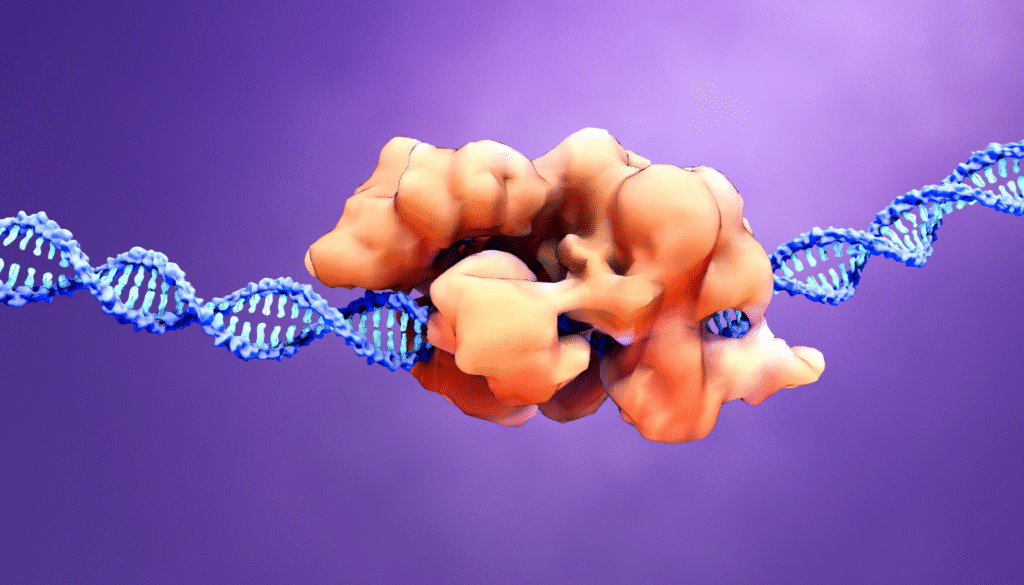Imagine a world where diseases like cancer, HIV, or genetic blindness could be stopped before they ever manifest. Where mutations responsible for inherited disorders are corrected with surgical precision—not in the operating room, but at the level of your DNA.
Thanks to a revolutionary gene-editing technology called CRISPR, that world may be closer than we think.
Since its discovery, CRISPR has been called one of the biggest scientific breakthroughs of the 21st century. But how does it work? What can it do? And how might it change your life in the near future?
Let’s explore the tool that’s rewriting the rules of biology.
What Is CRISPR?
CRISPR stands for Clustered Regularly Interspaced Short Palindromic Repeats—a natural defense system found in bacteria that scientists have turned into a genetic editing tool.
In simple terms: CRISPR is like a pair of molecular scissors, guided by a GPS system (an RNA sequence) that can locate and cut DNA at specific sites.
Once the DNA is cut, the cell naturally tries to repair it—allowing scientists to:
- Delete a gene
- Insert a new gene
- Fix a mutation
It’s fast, relatively cheap, and incredibly precise.
How Was CRISPR Discovered?
The story begins with bacteria.
Scientists studying bacterial DNA noticed unusual repeating sequences—later identified as genetic “memories” of viral infections. Bacteria use these sequences to recognize and fight off viruses in the future.
Researchers Jennifer Doudna and Emmanuelle Charpentier unlocked the potential of this system, developing a method that could target and cut any DNA sequence in any organism.
In 2020, they were awarded the Nobel Prize in Chemistry for their work.
How Is CRISPR Being Used Today?
Though it’s still in early stages, CRISPR is already changing lives and shaking up multiple industries.
🧬 1. Treating Genetic Diseases
CRISPR is being tested as a treatment for:
- Sickle cell anemia
- Beta-thalassemia
- Leber congenital amaurosis (a form of blindness)
- Cystic fibrosis
- Muscular dystrophy
Some clinical trials have already shown positive results, with patients improving dramatically after treatment.
🔬 2. Cancer Therapy
Researchers are using CRISPR to engineer immune cells to better recognize and attack cancer. Early trials suggest that CRISPR-based immunotherapy may be more effective and precise than traditional methods.
🌱 3. Agriculture
CRISPR allows scientists to edit crops to be:
- More nutritious
- Resistant to drought or disease
- Free of allergens or toxins
This could revolutionize food security—especially in regions hit by climate change.
🦠 4. Fighting Infections
Scientists are working on using CRISPR to target and destroy viral DNA, including:
- HIV
- Herpes
- Hepatitis B
- HPV
There’s even research into using CRISPR to detect viruses like COVID-19 in real-time.
The Future: Preventing Disease Before It Begins
The most exciting (and controversial) possibility? Editing human embryos to prevent genetic diseases before birth.
While this could eliminate certain inherited conditions, it also raises serious ethical questions:
- Where is the line between therapy and enhancement?
- Who gets access to this technology?
- Could it create new social inequalities?
In 2018, a Chinese scientist claimed to have created the world’s first CRISPR-edited babies—a move condemned by the global scientific community for ethical violations.
The future is full of potential—but also full of responsibility.
CRISPR vs. Traditional Gene Therapy
What makes CRISPR different?
- ✅ Cheaper and faster to develop
- ✅ More precise targeting
- ✅ Easier to use in different organisms
- ✅ Can edit multiple genes at once
In short, CRISPR is taking gene editing from a specialized lab tool to a widespread medical platform.
Limitations and Challenges
Like any new technology, CRISPR isn’t perfect.
Current concerns include:
- Off-target effects: Cutting the wrong part of the DNA
- Delivery issues: Getting CRISPR safely into the right cells
- Long-term safety: Unknown effects years down the line
- Regulation: Laws vary by country, creating ethical grey zones
But as research continues, these obstacles are being addressed—often with the help of AI and machine learning.
Final Thoughts: Rewriting the Book of Life
CRISPR is more than a tool—it’s a revolution in how we understand and treat disease. For the first time, we may have the ability not just to manage illness, but to prevent it at its genetic root.
It opens a future where children could be born free of inherited suffering, where cancer could be stopped before it spreads, and where humans may one day design biological solutions to problems we once thought untouchable.
We’re not just reading the code of life anymore—we’re learning how to write it



